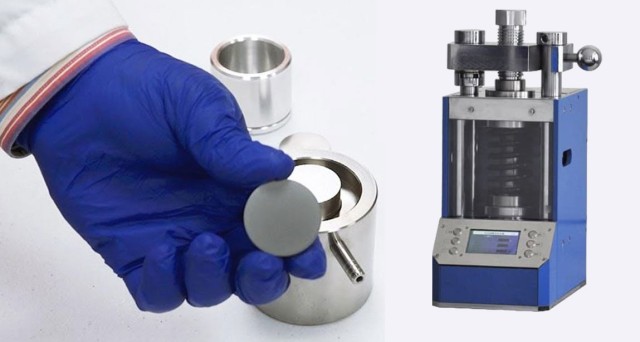Table of Contents
- Introduction to XRF Analysis and Sample Preparation
- P - Preparation: Ensuring Homogeneous Samples
- R - Recipe Design: Key Factors for Successful Pellet Pressing
- E - Equipment: Choosing the Right Tools for the Job
- S - Safety: Protecting Yourself During Sample Preparation
- S - Strategy: Developing a Consistent Preparation Workflow
- T - Training and Compliance: Enhancing Your XRF Skills
- Conclusion: Achieving Excellence in XRF Analysis
Introduction to XRF Analysis and Sample Preparation
X-Ray Fluorescence (XRF) analysis is a critical technique for material characterization, offering non-destructive and highly accurate results. However, the quality of these results is heavily dependent on the meticulous preparation of samples. This article delves into the intricacies of XRF sample preparation, highlighting the importance of ensuring homogeneity, designing effective recipes, selecting appropriate equipment, maintaining safety protocols, developing consistent workflows, and enhancing skills through training and compliance. By mastering these 7 proven PRESS strategies, you can achieve optimal results and elevate your XRF analysis to new heights of precision and reliability.
P - Preparation: Ensuring Homogeneous Samples
Preparing your samples for X-Ray Fluorescence (XRF) analysis is a critical step that directly impacts the accuracy and reliability of your results. The goal is to create a homogeneous sample that can be analyzed consistently, regardless of the material type or form. This section will delve into detailed steps on how to prepare your samples for XRF analysis, with a particular focus on homogenization techniques and the use of high-quality XRF pellet dies.
Homogenization Techniques
Homogenization is the process of making a sample uniform in composition, which is essential for accurate XRF analysis. The following techniques are commonly used to achieve a homogeneous sample:
-
Grinding: The first step in homogenization is grinding the sample to a fine powder. Ideally, the grain size should be less than 75 micrometers (<75μm). This ensures that the sample is uniformly distributed and reduces the likelihood of void spaces, which can lead to inaccurate readings. For most materials, grinding to this level of fineness is sufficient to achieve a homogeneous sample.
-
Mixing: After grinding, the sample should be thoroughly mixed. This can be done using a mechanical mixer or by manually stirring the powder. The goal is to ensure that all parts of the sample are equally represented, which is crucial for consistent XRF analysis.
-
Binding: In some cases, a binding agent may be added to the powdered sample. This is particularly useful for samples that are difficult to press into pellets. Common binding agents include cellulose wax mixtures, which are typically added in a proportion of 20%-30% binder to sample. The binding agent helps to hold the sample together and ensures a uniform pellet.
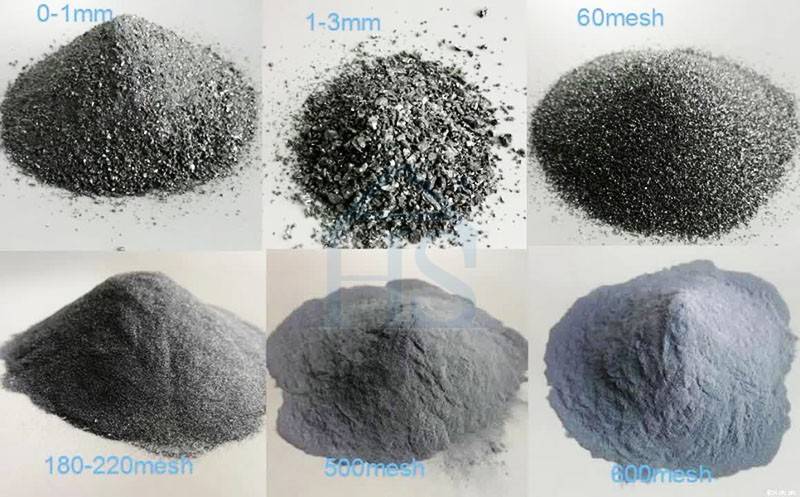
Using High-Quality XRF Pellet Dies
Once the sample is homogenized, the next step is to press it into a pellet using high-quality XRF pellet dies. Pressed pellets are a more rigorous sample preparation method compared to loose powders, as they provide a more uniform and stable surface for analysis. Here are the steps to follow:
-
Loading the Die: Ensure that the sample is free of any clumps and is completely homogeneous before loading it into the die. This is crucial for creating a consistent pellet.
-
Pressing: Use a hydraulic press to apply pressure to the sample. The recommended pressure range is between 20 and 30 tons (20-30T). This pressure is sufficient to create a dense, homogeneous pellet without causing the sample to overheat or deform.
-
Lubrication: Apply a pellet pressing lubricant to the die to prevent the sample from sticking. This ensures that the pellet can be easily removed from the die without damaging it.
-
Repeat: Repeat the process for each sample that needs to be pressed into an XRF pellet. Consistency in the pressing process is key to obtaining reliable results.
Tips for Successful XRF Pellet Pressing
-
Quality Dies: Always use high-quality XRF pellet dies to ensure consistent pellet shapes and sizes. Poor-quality dies can lead to irregular pellets, which can affect the accuracy of your analysis.
-
Personal Protective Equipment (PPE): Always wear appropriate PPE, such as gloves and safety glasses, when working with powdered samples. This protects you from potential hazards associated with handling fine powders.
-
Manufacturer’s Instructions: Follow the manufacturer’s instructions for the hydraulic press to ensure that you are using it correctly. This includes setting the appropriate pressure and ensuring that the press is functioning properly.
-
Calibration Standards: The sample preparation method you choose should be applied to your calibration standards as well as any unknown samples. This ensures that your calibration is accurate and consistent.
R - Recipe Design: Key Factors for Successful Pellet Pressing
Designing a sample preparation recipe for pellet pressing is a critical step in ensuring accurate and reproducible analytical results. The process involves several key factors that must be meticulously controlled. These factors include particle size, choice of binder, sample dilution ratio, pressing pressure, and pellet thickness. Each of these elements plays a crucial role in the quality and consistency of the final pellet, which directly impacts the reliability of the analytical data.
Particle Size
The particle size of the sample is one of the most critical factors in pellet preparation. Smaller particle sizes generally result in better binding and more uniform pellets. Ideally, samples should be ground to a particle size of less than 50µm. However, particle sizes up to 75µm can still yield acceptable results. The rationale behind using smaller particles is that they provide more surface area for the binder to adhere to, resulting in stronger and more cohesive pellets. Larger particles, on the other hand, can lead to weak pellets that may break during handling or analysis, causing damage to the spectrometer and compromising the sample.
Choice of Binder
The choice of binder is another pivotal element in the pellet preparation process. The binder serves to hold the sample particles together under pressure, ensuring that the pellet remains intact during analysis. The most common binders used in pellet pressing are organic materials like waxes, cellulose, or polyvinyl alcohol (PVA). The selection of the binder depends on the type of sample and the analytical technique being used. For instance, wax binders are often preferred for X-ray fluorescence (XRF) analysis due to their ability to withstand high pressures and provide good pellet integrity.
Sample Dilution Ratio
The sample dilution ratio, which refers to the proportion of binder to sample, is also a critical parameter. A common practice is to use a binder-to-sample ratio of 20-30%. This ratio ensures that the sample is adequately bound without being over-diluted. Over-dilution can lead to weak pellets that are prone to breaking, while under-dilution may result in pellets that are too dense and difficult to handle. Consistency in the binder-to-sample ratio is essential for reproducibility, as any variation can introduce errors in the analytical results.
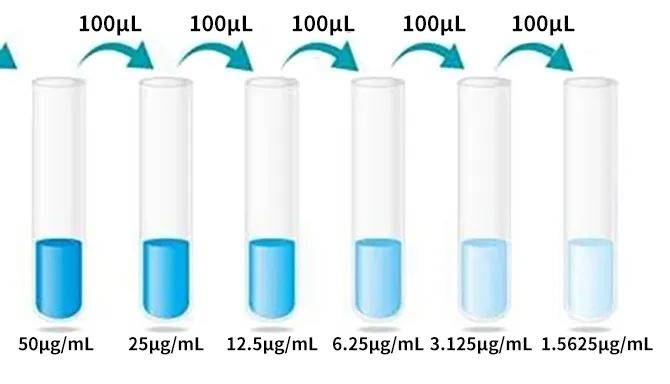
Pressing Pressure
Pressing pressure is the force applied to the sample-binder mixture to form the pellet. The pressure required can vary depending on the type of sample and binder used. Generally, higher pressures result in denser and more durable pellets. However, excessive pressure can cause the pellet to crack or deform, leading to inconsistent results. It is important to establish an optimal pressure range for each sample type during method development. This range should be maintained consistently to ensure the quality and reproducibility of the pellets.
Pellet Thickness
The thickness of the final pellet is another factor that must be carefully controlled. The thickness of the pellet affects the uniformity of the sample and the accuracy of the analytical results. Thicker pellets may result in non-uniform compression, leading to variations in the analytical signal. Conversely, excessively thin pellets may be too fragile and prone to breaking. The ideal pellet thickness is typically between 1-3 mm, depending on the specific requirements of the analytical technique being used. Maintaining a consistent pellet thickness is crucial for ensuring reproducible results.
Practical Considerations
In practice, the preparation of pressed pellets involves several steps, including grinding the sample to the appropriate particle size, mixing the sample with the binder, transferring the mixture into the pellet press die, and applying the necessary pressure to form the pellet. Each step must be performed with precision and consistency to ensure the quality of the final pellet. Attention to detail, such as evenly spreading the sample mixture in the die and applying the correct pressure, is essential for minimizing errors and achieving reliable analytical results.
E - Equipment: Choosing the Right Tools for the Job
When it comes to XRF pellet pressing, selecting the right equipment is crucial for ensuring accurate and consistent results. The process involves creating uniform, solid pellets from powdered samples, which are then analyzed using X-ray fluorescence (XRF) spectroscopy. This section will guide you through the key considerations for choosing the best equipment, with a particular focus on the benefits of using KINTEK automatic hydraulic presses and other essential tools.
Manual vs. Automatic Hydraulic Presses
The choice between a manual and an automatic hydraulic press largely depends on the volume and frequency of your XRF analysis. Manual hydraulic presses, while cost-effective, require significant physical effort from the operator, especially when applying high pressures. These presses typically offer a maximum pressure force of up to 250 kN, with clearly designed pressure force displays and simple operation via a hand lever. However, the effort required to achieve high pressures can be strenuous and may lead to inconsistencies in pressure application.
On the other hand, automatic hydraulic presses offer several advantages, particularly in busy laboratories. These presses can be programmed to operate autonomously once set up, allowing technicians to focus on other tasks. Automatic presses are available in various configurations, such as 30, 40, and 60 tonnes, and are significantly less labor-intensive to operate. This makes them ideal for frequent pressing work, as they provide greater accuracy and consistency due to the elimination of variable factors during use.
Benefits of KINTEK Automatic Hydraulic Presses
KINTEK is a renowned manufacturer of high-quality laboratory equipment, including automatic hydraulic presses specifically designed for XRF pellet preparation. These presses are engineered to meet the demands of high-throughput laboratories, offering several key benefits:
-
High Throughput: KINTEK automatic hydraulic presses are designed for quick and efficient operation, enabling rapid preparation of multiple samples. This is particularly beneficial in laboratories that handle a large volume of XRF analyses.
-
Integrated Pellet Dies: These presses come equipped with integrated pellet dies, which streamline the process and reduce the time required for setting up each sample. The dies are designed to ensure uniform pellet formation, which is critical for accurate XRF analysis.
-
Automation: The automation features of KINTEK presses allow for consistent and repeatable results. Once programmed, the press can operate autonomously, reducing the risk of human error and ensuring that each sample is prepared to the same exacting standards.
-
Ease of Use: KINTEK presses are designed with user-friendly interfaces, making them easy to operate even for those with limited technical expertise. The presses also feature automatic pressure relief systems to prevent overstress and ensure safety.
-
Versatility: KINTEK automatic hydraulic presses are compatible with a range of sample types, including those that may require additional binders like wax. This versatility ensures that the press can handle a wide variety of materials, making it a versatile tool in any XRF laboratory.

Essential Tools for XRF Pellet Preparation
In addition to the hydraulic press, several other tools are essential for successful XRF pellet preparation:
-
XRF Pellet Dies: These dies are specifically designed for creating uniform pellets from powdered samples. They come in various diameters, such as 40 mm, 32 mm, and 15 mm, allowing for flexibility in sample size.
-
Pellet Pressing Lubricant: Applying a thin layer of lubricant to the die and sample can prevent sticking and ensure smooth pellet formation. Lubricants are available in various formulations to suit different sample types.
-
Powdered Sample: The quality of the powdered sample is critical for accurate XRF analysis. Samples should be ground to a fine, homogeneous powder and free of any clumps or impurities.
-
Wax Binders: In some cases, particularly with materials that do not bind well or break up easily, adding a wax binder at the milling stage can improve pellet formation. Wax binders are available in powder or tablet form and should be used in the minimum amount necessary to safely bind the sample.
S - Safety: Protecting Yourself During Sample Preparation
When handling powdered samples and using XRF (X-ray fluorescence) equipment, safety should be the foremost consideration. The importance of personal protective equipment (PPE) and adherence to safety protocols cannot be overstated. This section delves into the critical aspects of safety that ensure the well-being of operators and the accuracy of measurements.
Personal Protective Equipment (PPE)
Personal protective equipment is essential for safeguarding operators from potential hazards associated with powdered samples and XRF equipment. Key components of PPE include:
- Gloves: Always wear gloves when handling powdered samples to prevent skin contact with potentially hazardous materials. Disposable nitrile gloves are commonly recommended due to their resistance to chemicals and powders.
- Safety Glasses or Goggles: Protect your eyes from airborne particles and potential splashes. Safety glasses with side shields provide comprehensive protection.
- Laboratory Coats or Aprons: Wear a lab coat or apron to protect your clothing from contamination. Ensure that the coat is made of a material that can be easily cleaned or is disposable.
- Respiratory Protection: Depending on the nature of the powder, a respirator may be necessary to prevent inhalation of harmful particles. Use a respirator approved by regulatory agencies such as NIOSH.

Safety Protocols for Handling Powdered Samples
Proper handling of powdered samples is crucial to prevent contamination and ensure accurate measurements. Here are some key protocols to follow:
- Surface Cleanliness: If there is any doubt about the surface cleanliness of a sample, compare the measurement results before and after grinding. If the results differ significantly, grind the sample again until the difference between the results before and after grinding is within the measurement error.
- Sample Preparation: There are several methods for preparing powder samples, such as powder compaction, flux fusion, or direct measurement of finely ground powder. The simplest and most common method is direct measurement of finely ground powder. In this case, prepare cuvettes and film for measurements. Consult with the supplier to select the most suitable type of film for a specific task and device.
- Sample Homogeneity: Bulk samples, such as automotive catalysts or soil, should be carefully crushed before measurement. Larger particles can differ greatly in composition, so crushing ensures a more homogeneous sample. If grinding is not possible, average the results of several measurements by mixing the sample in the cuvette.
Safety Protocols for Using XRF Equipment
XRF equipment uses X-rays, which can be harmful to health if not handled properly. Here are some safety protocols to follow when operating XRF analyzers:
-
Radiation Safety: XRF analyzers emit X-rays, which can be harmful if not handled correctly. Always follow radiation safety rules:
- Stay Away from Others: Maintain a distance of at least 15 feet (4.57 meters) from others when using the XRF analyzer.
- Use Accessories: Utilize optional accessories such as test stands to minimize direct exposure to the X-ray beam.
- Training: Provide radiation safety training to operators to ensure they understand the risks and how to mitigate them.
- Avoid Direct Exposure: Never hold a sample during analysis. Watch for the main beam indicator and ensure the beam is not directed at anyone.
- Careful Handling: Handle and use the XRF equipment with care. Store it safely according to local storage requirements.
-
Protective Cartridges: The protective cartridge is crucial for shielding the detector from dust and contaminants. Replace the cartridge regularly, as dirt and particles from previously measured samples can accumulate and distort measurement results. The replacement frequency may vary depending on the type of sample being measured. For instance, aluminum alloys can leave particles that affect the accuracy of subsequent measurements, necessitating more frequent cartridge changes.
-
Measurement Time: Ensure sufficient measurement time to achieve accurate results. The measurement time affects the accuracy of the measurement; longer times result in smaller errors in determining the concentration of elements in the sample. Typically, 10-30 seconds is required for an accurate quantitative result.
S - Strategy: Developing a Consistent Preparation Workflow
Creating a standardized workflow for XRF sample preparation is crucial for ensuring consistency and reproducibility in your results. Proper sample preparation is the foundation of accurate X-ray fluorescence (XRF) analysis, as it significantly impacts the quality of analytical data. Unlike other analytical techniques, XRF does not require extensive sample preparation, making it a cost-effective and efficient method. However, this does not diminish the importance of establishing a robust preparation protocol.
Solid Samples
Solid samples, ranging from unprepared metal pieces to cut and polished metal samples, require careful handling to ensure accurate results. The ideal sample for XRF analysis should have a perfectly flat surface. Irregular surfaces can alter the distance between the sample and the X-ray source, introducing measurement errors. All XRF systems are calibrated based on a fixed sample-to-source distance, so any deviation can affect the intensity of the X-ray signals.
For metal alloys and other solid samples, minimal preparation may suffice for qualitative analysis. However, for more quantitative results, cutting and polishing the samples is recommended. Surface finish is particularly important for lighter elements, as rough surfaces can cause scattering and re-absorption of longer wavelength elements. This effect is energy-dependent, meaning that while heavier elements like nickel (Ni) may not be significantly affected, lighter elements like carbon (C) or sulfur (S) could show dramatic reductions in signal intensity. Therefore, a finer surface finish achieved through lathing or grinding is essential for accurate analysis.
Powder Samples
Preparing powder samples for XRF analysis involves several methods, including powder compaction, flux fusion, and direct measurement of finely ground powder. The simplest and most common method is direct measurement of finely ground powder. This process involves selecting the appropriate cuvettes and films for measurements. There are various types of films available for XRF, and choosing the right one depends on the specific task and the device being used. Consulting with the supplier is crucial to ensure the selection of the most suitable film.
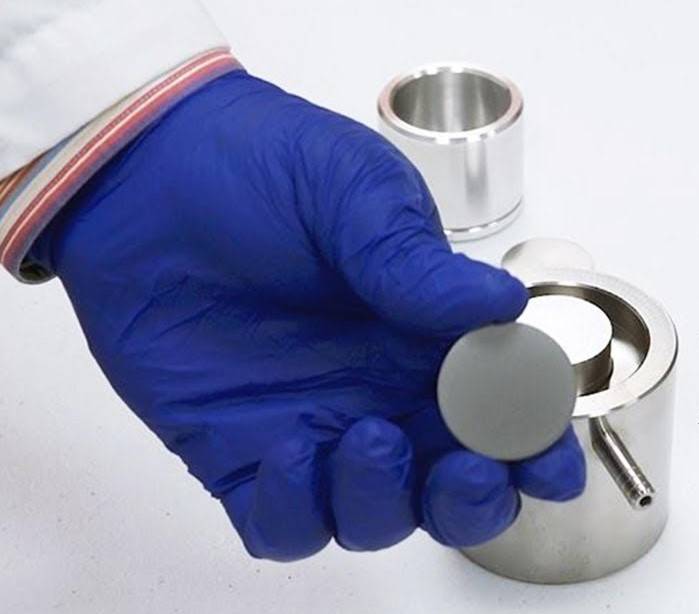
Workflow Consistency
To maintain consistency in your XRF analysis, it is essential to establish a standardized workflow. This includes:
-
Surface Cleanliness: Before analysis, ensure that the sample surface is clean. If there is any doubt about the surface cleanliness, compare the measurement results before and after grinding the sample. If the results differ significantly, grind the sample again until the difference between the results before and after grinding is within the measurement error.
-
Fine-Tuning and Calibration: Regularly assess if any fine-tuning or calibration is needed for your XRF equipment. This ensures that the device operates optimally and provides accurate results.
-
Optimizing Testing Time: Adjust the testing time for elements of interest to ensure that you capture sufficient data without unnecessary prolongation of the analysis.
-
Selecting the Right Mode: Choose the appropriate mode in the XRF analyzer based on the type of sample and the elements being analyzed. This can significantly impact the accuracy of your results.
-
Understanding Sample Characteristics: Be aware of the impact of heterogeneity, moisture, particle size, and different sample containers on your results. These factors can introduce variability and must be controlled to ensure reproducibility.
-
Developing Standard Operating Procedures (SOPs): Establish a "fit for purpose" method and develop SOPs for sample preparation. This ensures that all operators follow the same protocol, leading to consistent results.
-
Quality Control and Assurance (QC/QA): Implement appropriate QC/QA measures, including the use of matrix-matched certified reference materials (CRMs), blanks, duplicates, and replicates. This helps in verifying the accuracy and reliability of your results.
T - Training and Compliance: Enhancing Your XRF Skills
The role of training and compliance in mastering XRF analysis cannot be overstated. Proper training ensures that operators understand the intricacies of X-ray fluorescence (XRF) technology, while compliance with local regulations guarantees safe and accurate use of the equipment. This section delves into the importance of training, the necessity of adhering to local regulations, and the benefits of qualified personnel training.
Importance of Training
Training is the cornerstone of proficient XRF analysis. Operators must be well-versed in the theoretical aspects of XRF technology, including its principles, operation, and potential pitfalls. Without adequate training, even the most advanced XRF analyzers can yield inaccurate results due to improper calibration, sample preparation, or measurement techniques.
For instance, one of the most common mistakes beginners make is improper sample preparation. Solid samples like metals and alloys must be cleaned thoroughly, often requiring different files for different materials to prevent cross-contamination. Bulk samples, such as soil or automotive catalysts, need to be crushed or mixed to ensure homogeneity. Proper training ensures that operators understand these nuances, leading to more reliable and accurate results.
Another critical aspect is calibration. XRF analyzers use the fundamental parameter method, which requires pre-calibration for specific tasks. Misusing an analyzer calibrated for alloys to analyze precious metals or soil can result in poor accuracy. Training equips operators with the knowledge to select the correct calibration for each task, ensuring quantitative rather than just qualitative results.
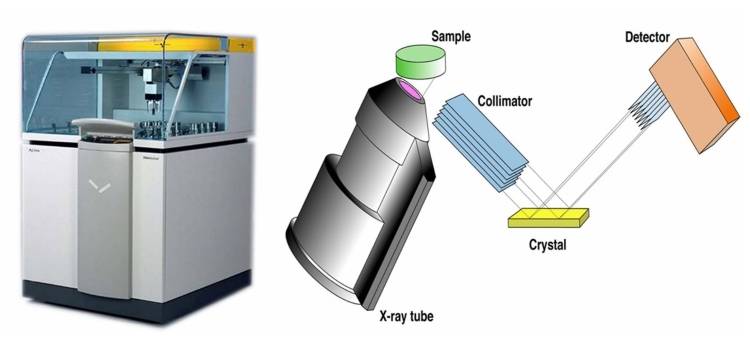
Compliance with Local Regulations
Compliance with local regulations is equally important. XRF analyzers use X-rays, which, although low in intensity, can pose health risks with prolonged exposure. Regulations vary by country and state, covering aspects such as permissible exposure limits, safety protocols, and equipment standards. Adhering to these regulations ensures not only the safety of operators but also the reliability of the data generated.
For example, certain regulations may require operators to wear protective gear or limit the duration of continuous exposure. Others might mandate regular equipment checks and maintenance. Understanding and adhering to these regulations is crucial for maintaining a safe working environment and ensuring that the XRF analyzer operates within legal parameters.
Conclusion: Achieving Excellence in XRF Analysis
Mastering XRF sample preparation is a critical step towards achieving accurate and reliable analysis results. By implementing the 7 PRESS strategies—Preparation, Recipe Design, Equipment selection, Safety protocols, Strategy development, and Training and Compliance—you can significantly enhance the quality and consistency of your XRF analysis. These strategies not only ensure optimal sample preparation but also protect the analyst and maintain compliance with industry standards. With a solid understanding and application of these techniques, you can achieve excellence in XRF analysis, leading to more precise and dependable outcomes in your research and testing processes.
Related Products
- XRF & KBR plastic ring lab Powder Pellet Pressing Mold for FTIR
- Automatic Laboratory Hydraulic Press for XRF & KBR Pellet Press
- XRF & KBR steel ring lab Powder Pellet Pressing Mold for FTIR
- XRF Boric Acid Lab Powder Pellet Pressing Mold for Laboratory Use
- Laboratory Hydraulic Pellet Press for XRF KBR FTIR Lab Applications
